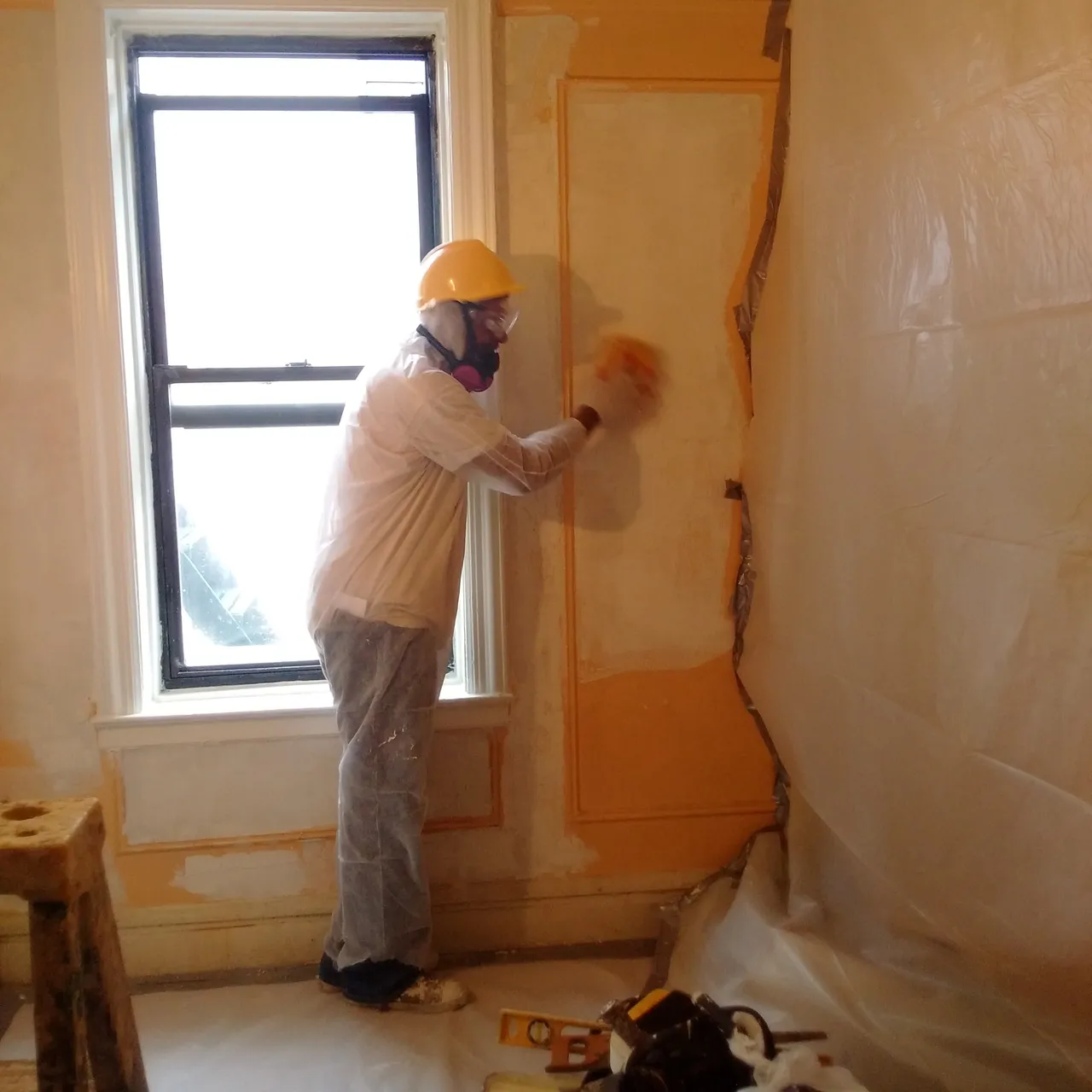Relied On Lead Paint Removal Company-- NYC's Premier Lead Reduction Service
Relied On Lead Paint Removal Company-- NYC's Premier Lead Reduction Service
Blog Article
Ideal Practices for Making Certain Safe and Detailed Lead Infraction Reduction
Addressing lead violation reduction requires a multi-faceted technique to ensure both security and compliance. It's the last clearance procedure, entailing extensive inspections and research laboratory screening, that really verifies a lead-free environment, ensuring lasting safety and security. Exactly how do these practices adjoin to ensure comprehensive lead abatement?

First Analysis
Performing an initial analysis is a crucial very first step in lead infraction reduction. This phase encompasses a detailed assessment of the home to identify the visibility, level, and details places of lead-based risks. Qualified experts, such as licensed lead inspectors or take the chance of assessors, ought to perform a comprehensive site inspection, utilizing tools like X-ray fluorescence (XRF) analyzers to accurately spot and gauge lead focus in paint, dirt, soil, and water.
The assessment must likewise include a review of the building's background, previous reports, and any kind of complaints or health problems reported by occupants - Lead Removal Contractors. Recording the findings thoroughly is important, as these documents develop the basis for creating an effective abatement strategy. An extensive analysis also entails sampling and lab evaluation, which are crucial to validate the presence of lead and overview succeeding activities
Furthermore, it is essential to communicate the results transparently to all stakeholders, including homeowner, occupants, and regulative authorities. By making certain that the first analysis is carried out with accuracy and rigor, specialists can lay a solid foundation for a targeted and efficient lead reduction process, eventually guarding public health and making sure compliance with regulative standards.
Appropriate Containment
Appropriate containment is crucial to avoid the spread of lead contaminants during reduction tasks. Effectively handling control lessens the danger of lead dust and debris migrating to non-work locations, thereby guarding both the setting and individuals outside the prompt job zone. To attain appropriate control, an airtight barrier of plastic sheet need to be established around the work area, making sure all joints and sides are securely sealed. Lead Removal Contractors. This barrier should extend from floor to ceiling and be taped to protect against any leakages.

Normal inspections of the containment area are required to examine for breaches or weak points in the obstacle. Any type of recognized concerns must be promptly resolved to preserve the stability of the containment. By adhering to these practices, abatement tasks can properly regulate lead contamination and reduce associated health threats.
Employee Defense
Guaranteeing worker security is paramount during lead abatement tasks to avoid work-related exposure to unsafe lead particles. Important actions consist of the use of individual safety tools (PPE) such as respirators, gloves, and full-body suits specifically designed to block lead dirt and fumes. Employees should undergo comprehensive training on the correct usage and upkeep of PPE, consisting of healthy testing for respirators to make certain optimum effectiveness.
Design controls, such as local exhaust air flow systems, are vital in lessening airborne lead focus in the workplace. Administrative controls should also be carried out, including limiting the period of exposure and revolving employees to visit this site right here minimize private exposure times. Regular clinical surveillance and biological surveillance are important for early discovery of lead absorption, making it possible for prompt treatment and treatment.
In addition, developing a purification procedure is crucial. Employees should follow rigorous decontamination procedures company website prior to breaks and at the end of their shift to avoid lead dirt from being brought outside the workspace. This includes extensive hand and face washing with lead-specific cleaner and changing out of contaminated garments.
Careful Cleanup
Maintaining a risk-free work atmosphere extends past employee security and incorporates thorough clean-up to make sure lead fragments are thoroughly gotten rid of from the website. The process of careful cleaning is essential in preventing the recontamination of the mellowed out area and protecting both existing and future residents.
To attain a thorough clean-up, all job areas should be methodically decontaminated. This includes using specialized HEPA (High-Efficiency Particulate Air) vacuum cleansers and wet-wiping methods to record and remove great lead dust that might have picked surface areas. It is crucial to clean up all straight surface areas, including floorings, window sills, and countertops, along with upright surface areas that might have caught lead bits.
Employees have to use appropriate personal safety devices (PPE) during cleaning to avoid direct exposure to recurring lead dust. Utilized cleansing products such as wipes, sponges, and wipe heads need to be disposed of according to harmful waste disposal policies.

Final Clearance
Last clearance is the vital concluding stage of lead reduction that figures out whether the site is risk-free for reoccupation. this This vital step involves thorough assessment and testing to validate that all lead hazards have been effectively gotten rid of. The procedure starts with a visual evaluation by a qualified lead-based paint inspector or risk assessor to ensure no visible dirt or debris continues to be. This is followed by gathering dirt wipe samples from various surfaces, including floorings, windowsills, and various other horizontal surfaces. Lead Removal Contractors.

Last clearance screening not only secures future occupants however additionally ensures compliance with local, state, and federal laws. It offers as a recorded recognition of the abatement specialist's adherence to sector best practices. Making sure a detailed and effective last clearance is important in guarding public health and wellness and cultivating count on the reduction process.
Verdict
Guaranteeing risk-free and thorough lead violation abatement demands a multifaceted method incorporating first assessments with advanced discovery methods, efficient containment techniques, strict worker defense protocols, and careful clean-up procedures. The last clearance phase, featuring thorough examinations and research laboratory screening, is important to verify conformity with EPA criteria. Adherence to these best methods assures a secure setting for owners, alleviates wellness threats, and supports regulative demands, consequently advertising public health and safety in lead-affected locations.
Report this page